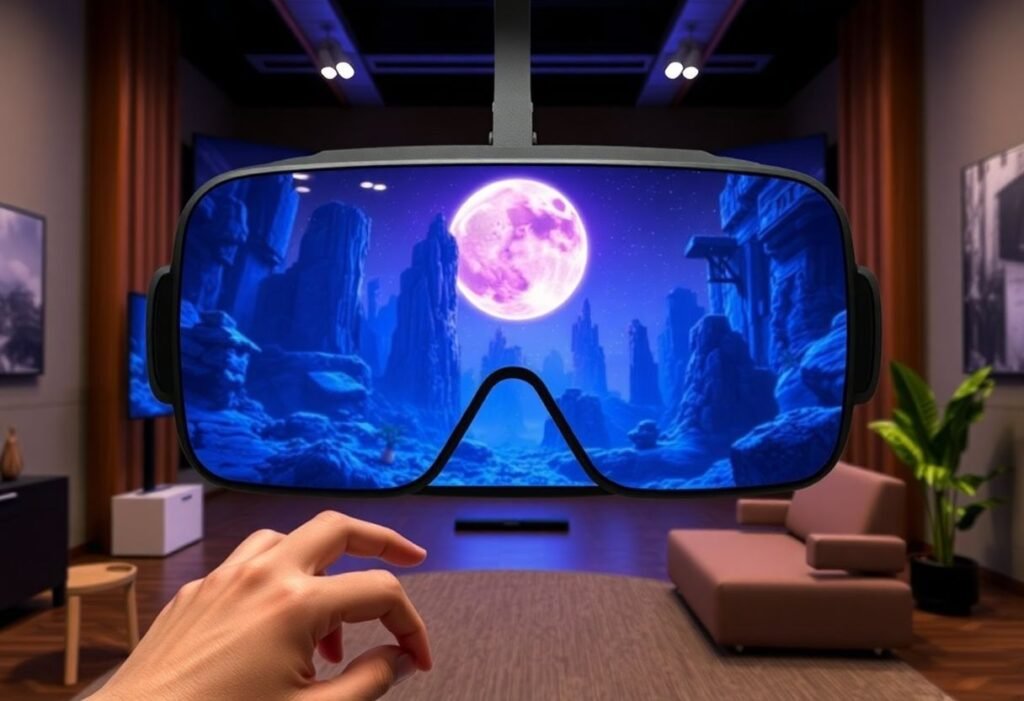The future of virtual reality gaming is poised to revolutionize the landscape of digital entertainment. With advancements in technology, VR gaming is becoming more immersive, interactive, and accessible, paving the way for innovative experiences that surpass traditional gaming.
The Rise of Immersive Experiences in Gaming
Virtual reality gaming offers unparalleled levels of immersion that engage gamers like never before. With realistic graphics, haptic feedback, and 360-degree environments, players are transported into vibrant worlds where they can interact with their surroundings. This shift towards more interactive gameplay is creating new opportunities for game developers to craft unique narratives and environments. As VR technology continues to improve, we can expect even more breathtaking experiences that blur the lines between reality and the virtual world, driving the gaming sector towards uncharted territories. Innovations in VR headsets, motion tracking, and sensory feedback are some areas where we see rapid advancements contributing to this growing trend.
Technological Innovations Shaping Virtual Reality
Innovations in technology are at the heart of the evolution of virtual reality gaming. Developments in graphics processing units (GPUs) and display technology enhance the visual fidelity of VR games. New VR devices harness improved refresh rates and resolutions, providing a smoother, more captivating gameplay experience. Additionally, spatial audio technology adds depth to the virtual environments, making game sounds more realistic and immersive. Companies are also venturing into cloud gaming, allowing players to enjoy high-quality VR experiences on less powerful hardware. This advancement democratizes access to VR gaming, expanding its audience and redefining the industry.
Social Impact of Virtual Reality Gaming
As virtual reality gaming evolves, its social implications become more significant. VR can transform the way people connect and play with each other. Multiplayer VR games allow friends and family to interact in shared virtual spaces, enhancing communication and collaboration. Furthermore, VR can foster communities centered around interests or specific games, creating spaces for like-minded individuals to connect. This social aspect of VR gaming goes beyond traditional online gaming by simulating physical presence, enriching human interactions regardless of geographical barriers. As social gaming becomes more vital, the future of VR gaming will undoubtedly focus on developing deeper social connections through virtual experiences.
Applications Beyond Entertainment
While primarily viewed as a gaming platform, virtual reality technology has numerous applications beyond entertainment. Industries such as education, healthcare, and architecture are increasingly incorporating VR into their processes. In medical training, VR allows students to practice procedures in a safe environment, offering simulations for real-world scenarios without risk. Educational institutions utilize VR for immersive learning experiences, presenting history and science in a captivating format. Furthermore, architects can create 3D models of buildings that clients can explore before construction, saving time and resources. As the versatility of VR enhances various sectors, the gaming industry can learn from these innovations to deliver richer experiences.
The Role of Artificial Intelligence in Virtual Reality
Artificial intelligence plays a transformative role in the advancement of virtual reality gaming. AI enhances player experiences by creating responsive and adaptive game environments. For instance, AI can generate procedurally generated levels, offering a unique experience in every gameplay session. Additionally, intelligent NPCs (non-playable characters) can react dynamically, making interactions more engaging. Machine learning algorithms analyze player behavior, allowing games to adapt challenges and difficulty levels based on individual performance. As these technologies advance, the synergy between AI and VR will lead to richer and more personalized gaming experiences, pushing the boundaries of what games can achieve.
The Future of Virtual Reality Gaming and its Challenges
Despite the promising future for virtual reality gaming, significant challenges need to be addressed. Issues such as affordability, accessibility, and health concerns hinder widespread adoption. High-quality VR setups can be expensive, limiting access for many potential players. Additionally, prolonged exposure to VR can cause discomfort or nausea, leading to reluctance among newcomers. Developers and hardware manufacturers must work collaboratively to educate users and create comfortable experiences. As the technology matures, it will be vital to find solutions to these challenges, ensuring a broad audience can enjoy the engaging world of virtual reality gaming.
Disclaimer: The opinions expressed in this article represent the author’s views and do not necessarily reflect the views of any organizations.





















